Trees & Emerald Ash Borer
What kind of tree(s) do I have?
Here’s a cool tool! in 2021 the Lexington Tree Board conducted a city-wide tree inventory. We try to do this every ten years, as requested by the Nebraska Forest Service. The inventory helps us make smarter tree-planting choices, and can alert us of problem areas should a new tree disease appear. Here’s the cool part: You can view the tree inventory online! Click here to go to Nebraska’s tree inventory page. On the right side of the screen scroll down and select Lexington. Now you can navigate through the aerial map and zoom in or out. Click on any colored dot to get details about the tree in that location. Except for parks, cemeteries, schools and other public spaces, only “street trees” were counted – trees within 20 feet of the curb. It may also be helpful to know that “DBH” stands for the Diameter [of the trunk] at Breast Height.”
Click here for the report that summarizes the 2021 Tree Inventory findings.
Emerald Ash Borer
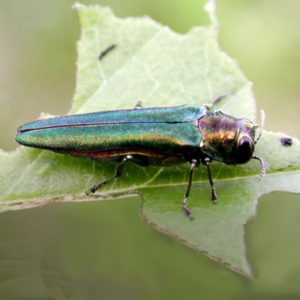
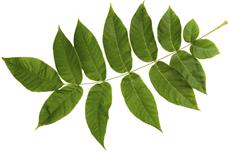
This green insect has been killing Ash trees nationwide. Once it arrives in a community, all Ash trees are sure to die within a few years. Some Nebraska communities are already removing their Ash trees. The Borer has been spotted in Kearney, which means it will soon hit Lexington. Lexington’s 2021 Tree Inventory counted more than 650 Ash trees in public spaces and along streets. The Lexington Tree Board strongly discourages planting new Ash trees. If you have any Ash trees (except Mountain Ash – not a true Ash), you may want to plant a replacement soon in anticipation of ash tree removal in a few years. Alternatively you can treat your ash tree, which involves annual trunk injections at more than $100 per treatment, but can be more for older, bigger trunks. We don’t know anybody qualified to perform this treatment in our area.
Recommended Trees
While other tree species may work fine here, the Lexington Tree Board recommends a number of species that generally do well in our environment. These are marked with an asterisk (*) in the list below.
To help thwart tree diseases, it is always best to plant a wide diversity of tree species in any community. The following tree species are considered over-represented at this time, and recommended as lower priority: Siberian/Chinese Elm, Juniper, Honeylocust, Silver Maple, and Austrian Pine.
The Tree Board strongly recommends you do NOT plant the following species because they are prone to disease and dying:
Ash (except Mountain Ash)
Scotch Pine (Austrian Pine may also have disease issues)
Many people prefer the male trees of some species, because the females generate an excessive amount of seeds, sometimes associated with an unpleasant odor. This usually means a cleanup nuisance for you. Common examples include Cottonwood, Tree of Heaven, Honeylocust and Gingko. It should be noted that not all tree species have pronounced gender differences.
Tree Hardiness Zone
When shopping for trees, you may notice some labels make note of which “zone” they do best in. You will see by the map below that Lexington (and most of Nebraska) is in Zone 5, but pretty close to Zone 6.
USDA updated the map in 2023 to reflect changes due to climate change. They offer a more detailed, interactive map here.
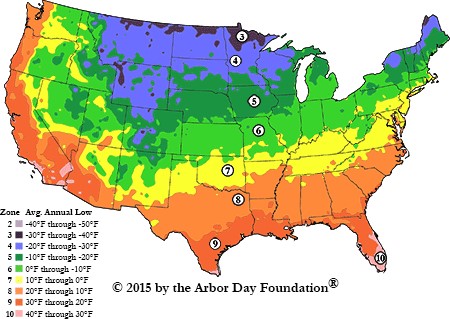
Large Trees (60′ and taller)
Austrian Pine
Cottonwood (male only)
*Elm (Princeton, Discovery, Accolade, Frontier, Triumph, Japanese, Jefferson, Regal, New Horizons, New Harmony, or Lacebark)
*Gingko (male only!)
*Hackberry
*Honeylocust (Shademaster)
*Japanese Pagoda Tree
*Kentucky Coffeetree
*Linden (American or Littleleaf)
London Planetree (a/k/a/ Sycamore)
*Maple (Norway or Sugar)
Northern Catalpa
*Oak (Bur, Pin, Red or Chinkapin)
Spruce
Medium Trees (40′-60′)
Birch
*Maple (Miyabe or Superform)
*Orange Osage
Ponderosa Pine
*Walnut
Small Trees (20′-40′)
*Goldenraintree
all Fruit Trees (Apple, Pear, Peach, etc.)
Jack Pine
*Mountain Ash (not a true Ash)
Washington Hawthorne
This link from the Nebraska Forest Service lists many more trees and in greater detail.
Este enlace del Servicio Forestal de Nebraska enumera muchos más árboles y con gran detalle.
Shrubs. Bushes and Very Small Trees
We won’t get into specific shrub varieties. In most cases, they are okay to plant under overhead utility lines because, although some shrubs can grow more than 20 feet, most are less the 20 feet tall).
Some trees may not grow as tall as 20 feet. The main difference between a tree and a shrub is that shrubs have many stems (trunks) growing out of the ground, which gives them a generally round shape.
Planting Trees – How and Where
First, here’s a link to a tree-planting guide from the Arbor Day Foundation, specific to potted trees. Click here for a brochure from www.treesaregood.org that provide planting instructions for trees with roots that are bound in a bag. That’s the How (for trees that come in pots).
Click here for a link to “10 Tips for Successful Tree Planting” from the Nebraska Statewide Arboretum.
Haga clic aquí para obtener un enlace a “Diez consejos para plantar árboles con éxito”del Arboreto de Nebraska.
Click here for guidelines for watering newly planted trees.
Haga clic aquí para obtener pautas para regar árboles recién plantados
Where to plant trees is a decision influenced by several conditions, including tree size and City Code.
The first rule is to not plant trees in City Right-of-Way. In most cases this is 20 feet from the curb. On narrower streets it might be 16 feet, but you’re always okay with 20 feet. The reason is that the tree growth – both above and below ground – may damage utilities such as electric wires or water mains. Tree roots could cause concrete to buckle and heave, including your sidewalk. The result is unsafe conditions for sidewalk users, and possibly an expensive sidewalk repair for you. To protect your concrete, including driveways, we recommend planting trees away from concrete further than: Small Trees – 2 feet; Medium Trees – 3 feet; Large Trees – 4 feet.
This is particularly important if you have a corner lot, where even shrubs too close to the streets make it difficult for drivers to see traffic around the corner. The rule for corners is to plant no closer than 35 feet from the corner itself.
That being said about right-of-way, property owners are responsible for trees on their own property, including trees on the public way within their property.
No trees should be planted under overhead utilities, for 25 feet on either side of wires. Planting under wires – even shrubs – is not a recommended practice. Also do not plant trees less than 10 feet from a fire hydrant.
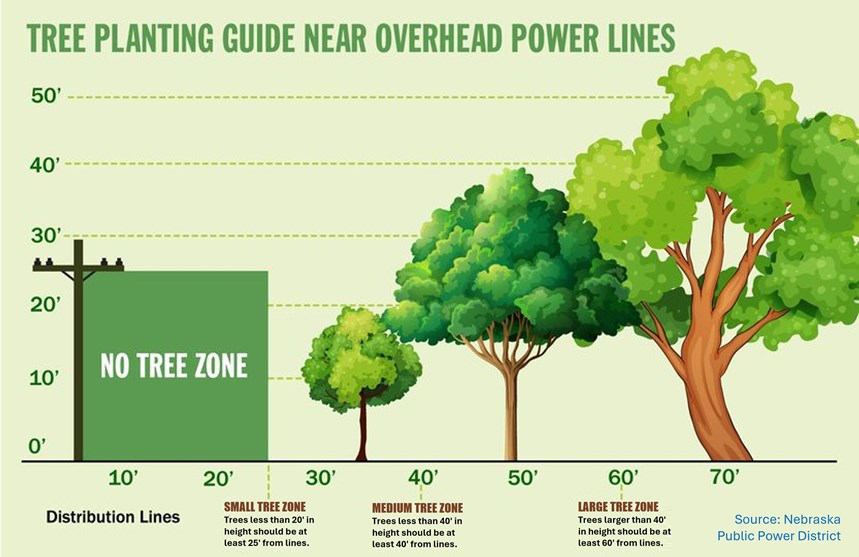
Recommended spacing between trees: Small Trees, 30 feet (30′); Medium Trees, 40 feet (40′); Large Trees, 50 feet (50′).
Tree canopy clearance over streets and walkways shall be the responsibility of the property owner. A clearance of eight feet (8′) must be maintained over walkways and a clearance of twelve feet (12′) must be maintained over streets and alleys.
Pruning: Every owner of a tree overhanging any street or right‐of‐way within the City shall prune the branches so that such branches shall not obstruct the light from any street lamp or obstruct the view of any street intersection. There shall be a clear space of eight feet (8′) above the surface of the street or sidewalk.
The City shall have the right to prune any Street Tree or shrub on private property when it interferes with the proper spread of light along the street from a street light, or interferes with the safe operation of vehicular traffic or obstructs the visibility of any traffic control device or sign.
The Lexington Tree Board discourages the “topping” of trees, which can harm a tree. Topping, sometimes called “heading,” “tipping,” “hat-racking” or “rounding over,” is defined as indiscriminate cutting of tree branches to stubs or to lateral branches that are not large enough to assume the terminal role. The simplest recommendation is, if you must prune, cut the branch off as close as possible to the trunk or larger limb to which it is attached. Click here for a brochure that explains why topping hurts trees.
Property owners shall remove dead, diseased or dangerous trees, or broken or decayed limbs. The City shall have the right to cause the removal of any dead or diseased Street Trees on private property within the City, when such trees constitute a potential hazard to life and property, or harbor insects or diseases that constitute a potential threat to other trees within the city. The City will notify property owners in writing when such nuisance trees are discovered. The owner must remove such trees at their own expense within sixty days after the date the notice is served. In the event the owner fails to comply with such provisions, the City shall have the authority to remove such trees and charge the cost of removal to the owner.
All stumps of former Street Trees must be removed below the surface of the ground so that the top of the stump shall not project above the surface of the ground.
It is unlawful for any person to prevent, delay or interfere with the City Tree Board, or any of its agents, while engaging in and about the planting, cultivating, mulching, pruning, spraying, removing or inventorying Street Trees, including trees in public right-of-way on private property.
Community
Chamber of Commerce
The Lexington Area Chamber of Commerce provides many services that benefit our community. The organization sponsors and organizes events that bring visitors to Lexington. They develop promotions which benefit the members of the Chamber of Commerce.
Lexington Schools
Our Mission: To develop capable and responsible lifelong learners. With the cooperation of family, school and community, we will prepare students for the global challenges and the opportunities of the future.
Other Community Links
A list of useful links.
Community Profile
Lexington is undergoing exciting growth in population as well as commercial and industrial enterprises, thanks to the City’s dynamic and easy-to-work-with Economic Development team. Click here for success stories and leads for your venture ideas.
Didn't find what you're looking for?
Contact Us
406 E 7th Street
PO Box 70
Lexington, NE 68850
(308) 324-2341
Dennis Burnside
Asst. City Manager
[email protected]

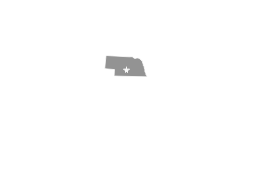
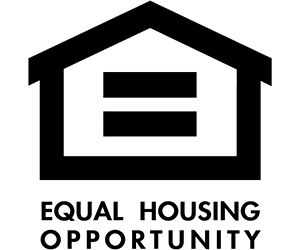

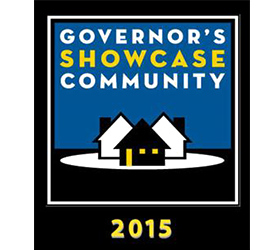
@2024 City of Lexington | All rights reserved. | Designed by Kevin Brown Design. Photo Credit: Brandon Bartoszek

